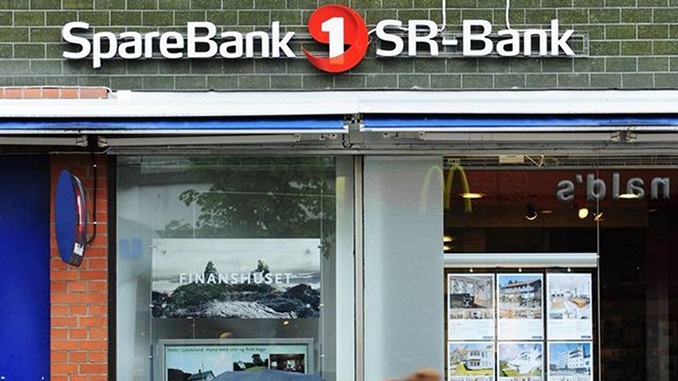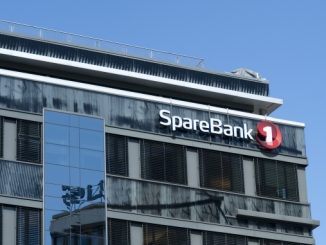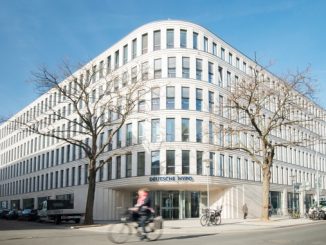
SR-Boligkreditt inaugurated a green bond framework with the first negative-yielding euro benchmark covered bond from the Nordics on Tuesday, while Sparebanken Sør Boligkreditt is set to follow with a green covered bond debut off the first Norwegian framework also targeting social goals.
SR-Boligkreditt’s green bond, a €500m (NOK5bn) seven year deal, is the first in Norway off a framework that allows issuance by both the parent – in its case, SpareBank 1 SR-Bank – and the covered bond-issuing subsidiary. Sparebanken Vest was the first Norwegian bank to announce such a framework, in mid-August, but it is yet to issue.
Dag Hjelle, CEO of SR-Boligkreditt, said this aspect of the framework was a focus of discussions during the roadshow.
“That we could issue both covered and senior preferred or non-preferred under the framework was very positively received,” he told Sustainabonds, “as was its broad nature, containing residential and commercial mortgages, renewable energy and transport.”
The use of proceeds for SR-Boligkreditt’s green covered bond is the residential mortgage portion of its green portfolio and, as with all such Norwegian issuance to date, ING and Multiconsult were involved in structuring the framework.
“We opted to go down this route, where there was precedent that was already accepted by the market,” said Hjelle.
He said the issuer had since the beginning of the year been planning to launch the euro benchmark green covered bond in the autumn, and was able to move quickly after finalising the framework, with the roadshow helping create momentum.
SR’s roadshow ran from Monday to Thursday of last week, following an announcement of its plans the previous week, and leads Barclays, ING, Natixis, SEB and UniCredit teed up launch this Monday with a post-roadshow update flagging a seven or 10 year euro benchmark for launch in the near future.
Although euro benchmarks executed last week achieved mixed results, Hjelle said the issuer was encouraged by investor feedback gathered on the roadshow and market conditions on Monday, but nevertheless held off issuing first thing on Tuesday, while Italy’s Banca MPS and France’s CRH went out with new issues.
“It was a very busy day, therefore we waited a bit, just half an hour or so,” he said. “We then saw that it was a strong day, so we went ahead with it. It turned out to be a good decision and a good trade.”
On the back of initial price thoughts of the mid-swaps plus 13bp area for a €500m no-grow seven year deal, the leads took over €850m of orders in the first 45 minutes. Guidance was revised to plus 10bp+/-1bp, will price in range, and the book ultimately reached €1.1bn, excluding joint lead manager interest. The spread was fixed at 9bp and the yield of minus 0.211% made it the first negative-yielding euro benchmark covered bond from a Nordic issuer.
Hjelle put the new issue premium at 2bp-3bp and said this reflected the interest rate environment.
“It’s important to leave something on the table and to have all parties satisfied,” he said, “and in the end it was a negative yield for investors, so we shouldn’t be too greedy here.
“It was interesting that little SR Boligkreditt was the first to issue a negative yielding covered bond out of the Nordics,” he added.
According to the leads, green investors were allocated 48.3% of the bond.
“It’s hard to quantify their involvement,” said Hjelle, “but I would definitely say the greenness helped with the deal and we did have a good handful of new accounts.”
Germany and Austria took 49%, the Nordics 21%, France 12%, the Benelux 11%, the UK and Ireland 3%, and others 4%. Banks and private banks were allocated 56%, asset managers 19%, central banks and official institutions 17%, and insurance companies and pension funds 8%.
The green bond framework has a second party opinion from Sustainalytics, from which SR-Bank has an overall ESG score of 77, making it an “outperformer”.
Unlike some green bond issuers, SR-Bank/SR-Boligkreditt does not yet offer discounts on green loans. According to Hjelle, this was a topic of discussion with investors on the roadshow.
“The consensus was that this will go hand in hand,” he said, “so when we have a benefit in lending, this will be reflected in the price. That benefit doesn’t have to be in the funding – it could be, for instance, in Pillar 2 requirements or other measures by the regulators or politicians who will lead the way here.
“I’m not sure SR-Bank is able to lead the market here. But I am pretty sure this will eventually come.”
SR-Boligkreditt is the third green covered bond issuer from Norway, following SpareBank 1 Boligkreditt and then DNB Boligkreditt, with Sparebanken Vest already in the pipeline.
And on Wednesday Sparebanken Sør Boligkreditt announced plans for a €500m no-grow five to seven year green covered bond to be launched after a roadshow starting next week. Its green and sustainability bond framework is the first from Norway to incorporate social uses of proceeds alongside green.
Proceeds of covered bond issuance by Sparebanken Sør Boligkreditt will be earmarked for financing green residential mortgages, while senior sustainability bonds issued by parent Sparebanken Sør will incorporate both green buildings (commercial and residential) and social aspects under the category “access to essential services”. The latter is split into two categories – healthcare and social care, and education and vocational training – and can support not only activities in Norway but also emerging countries in South America, Africa and Asia.
ING is structuring advisor and it has been mandated alongside Commerzbank, Natixis, SEB and Swedbank to lead manage the inaugural green covered bond after the roadshow, which runs from next Thursday (10 October) to 16 October.



